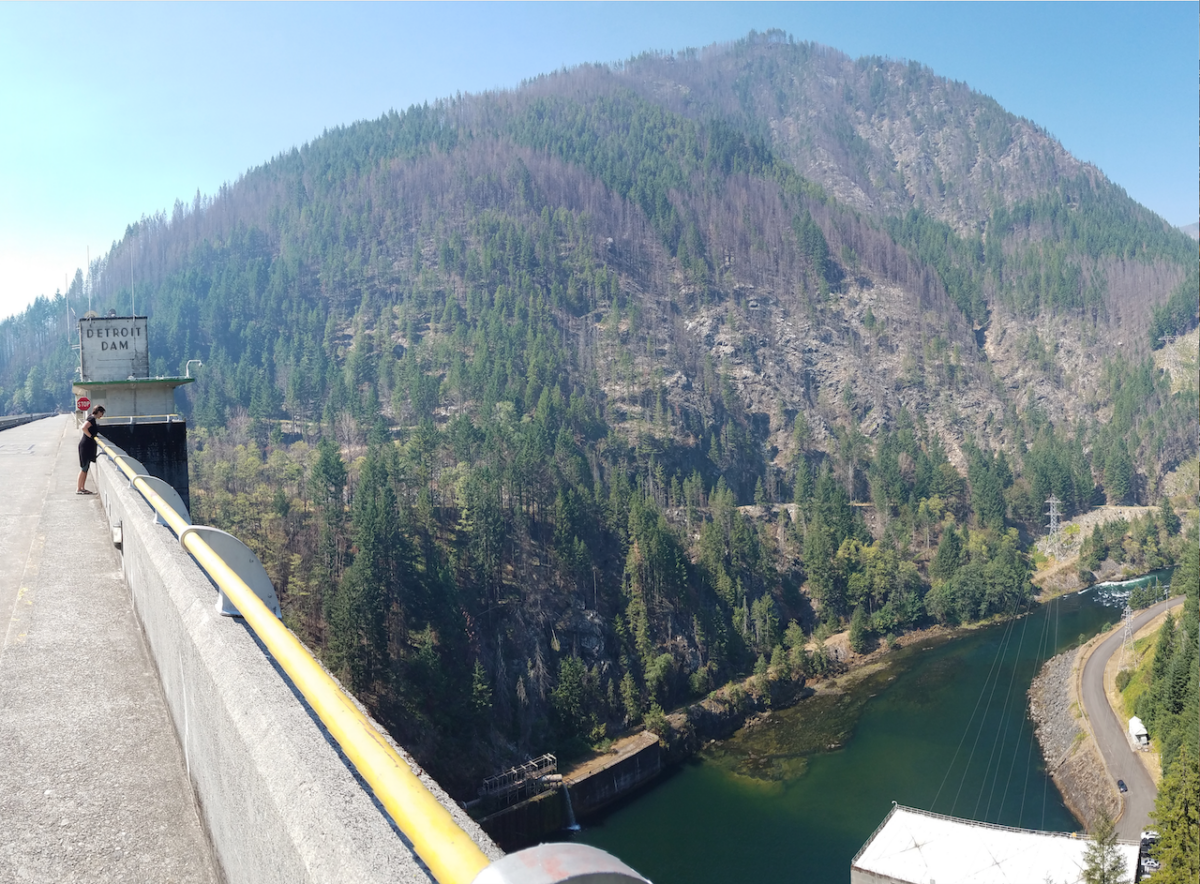
Corps’ Plans For Fish Collectors At 2 Willamette Dams Scrutinized
An Army Corps of Engineers plan to build two huge and expensive fish collectors at a pair of its Willamette Valley dams to improve downstream salmon and steelhead passage is being scrutinized in a news story out today that argues there’s another, far cheaper way to essentially achieve the same thing.

A joint OPB/Pro Publica article says the devices that would be installed at Detroit Lake east of Salem and Lookout Point southeast of Eugene would cost a total of $622 million, but there’s a “simpler way.”
“Opening dam gates and letting salmon ride the current as they would a wild river,” the lengthy story by Tony Schick argues. “It costs next to nothing, would keep the Willamette Valley dams available for their original purpose of flood control and has succeeded on the river system before.”
He also casts doubts on the Corps’ rationale for continued dam operations on the system, stating that farmers, regional utilities and recreational boating companies “don’t need the help.”
“The Army Corps contends that halting dam operations so fish can pass, a low-cost solution proven to boost fish survival greatly, would harm hydropower customers, farmers’ irrigation and recreational boaters. But ProPublica and OPB’s reporting found that many of these interests say they don’t need all the power the dams generate or the water they retain,” reads a message from ProPublica communications manager Connor Goodwin in pitching the article to reporters. “Even the hydropower industry opposes the Corps’ plan to continue with hydropower, the cost of which will outstrip revenues by more than $700 million in 30 years, according to the Corps own estimates.”
According to Schick, the engineers believe the two fish collectors would capture from 80 to 95 percent of outmigrating fish and NMFS – which oversees projects impacting ESA-listed stocks – is “confident that collectors can be effectively applied” at both reservoirs.
The news comes as the Corps is holding a series of information-sharing and listening sessions about the future of electricity generation at its Willamette Valley dams.
The meetings were announced early last month and are part of a Congressionally mandated “disposition study to determine the Federal interest in, and identify the effects of, deauthorizing hydropower as an authorized purpose, in whole or in part, of the Willamette Valley hydropower project.”
The dams were constructed back in the post-World War II years to control flooding in the valley, among other functions, and the impoundments provide fishing for kokanee, trout and – at least at Lookout Point – illegally introduced walleye, along with recreational boating.

But they also heavily impacted spring Chinook and winter steelhead populations, cutting off access to large areas of spawning and rearing habitat.
Some of that has been mitigated over the decades by hatchery production as well as trap-and-haul operations passing wild fish upstream of the dams. In recent years and by court order, the Corps has also been drawing down some of the reservoir to aid downstream passage for young salmon and steelhead.
(At Green Peter this fall that resulted in a dieoff of an estimated 8,000 kokanee due to barotrauma caused by the rapid decrease in water levels that took the landlocked sockeye from the depths of the reservoir to the surface downstream in a hurry.)
Where September’s informational meetings saw the Corps detailing the focus and critical elements around the disposition study, the two virtual and one in-person listening sessions coming up in mid-November are meant to gather input on what the public thinks about the valley’s federal hydro system – a chance for farmers, recreationalists and electrical utility customers to confirm, deny or add context to the ProPublica/OPB article’s assessment of their feelings on the dams – and will be included in the Corps’ report back to Congress.
“We look forward to collecting the public’s input as we prepare this report,” said Hugh Kim, the Corps of Engineers project manager for the disposition report, in a press release out yesterday. “This is an opportunity for the public to contribute to decisions to be made at the Congressional level.”
From an angler’s standpoint, it’s very, very hard to argue against strategies and ideas that should increase ESA-listed wild fish numbers markedly and at a fraction of the cost of the fish collection systems envisioned by the Corps. But some will naturally ponder how it might shake out in terms of fishery impacts if more native springers are returning, whether that will lead to reduced hatchery production – which powers recreational fisheries in the Willamette and to a degree the Lower Columbia – and what the plan is for restoring mainstem rearing habitat below the dams that more young salmon and steelhead would ultimately need.
